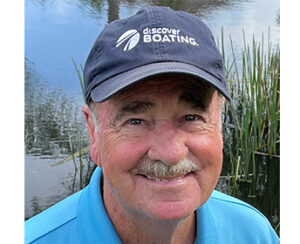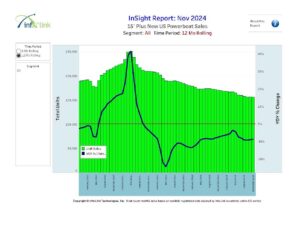With fuel sales down 50 percent — the lowest level since the US Energy Information Administration began tracking this data in 1991 — ethanol producers have, in turn, been moving much less product. As a consequence, I expect the campaign for more E15, or even higher blends, to rear its ugly head again!
Consumers remain confused about the multiple fuel offerings currently in the marketplace, according to a recent study conducted by The Harris Poll for the Outdoor Power Equipment Institute.
The study, which has been conducted annually for the previous seven years, shows lack of education, inadequate labeling and dangerous marketing tactics around new fuel products — such as higher ethanol-blended gasoline — are likely causing consumers to misfuel.
Specifically, the study found that more than one in five outdoor power equipment owners are currently misfueling and one quarter have done so in the past.
Today, there are more fuel blends on the marketplace than ever. Consumers don’t always recognize what blend (specifically E15, also confusingly marketed as Unleaded 88) not to use, with mixed results. In addition to well-documented poor performance problems, misfueling with anything above E10 can also invalidate a manufacturer’s warranty.
While most of the nation has been focused on the covid-19 pandemic, Growth Energy, the ethanol blenders’ chief lobbying group, has been busy pushing their agenda for: greater market access for higher ethanol blends; reintroducing consumers to higher ethanol; and defending the Renewable Fuel Standard (RFS). And they are seeing successes.
The U.S. Department of Agriculture just announced a new $100 million grant program available to facilitate increased sales of higher blends by expanding the installation of E15 and E85 infrastructure at retail gas stations around the country, called the Higher Blends Infrastructure Incentive Program.
“We are grateful for this commitment to expanding infrastructure and access to higher blends of biofuels,” said Growth Energy CEO Emily Skor. “USDA secretary Sonny Perdue’s announcement helps propel higher blends into the next decade. A previous grant program helped 14 of the largest gas retailers install more than 2,000 locations across the nation dispensing Unleaded 88,” she added.
On the legislative side, the ethanol producers are rallying around the introduction of a bill by Senators Amy Klobuchar (D-Minn.) and Chuck Grassley (R-Iowa) that would provide assistance to biofuel producers. Specifically, the legislation would direct the Secretary of Agriculture to establish a renewable fuel feedstock reimbursement program to reimburse ethanol producers for 75 percent of their feedstock purchases in the first quarter of 2020.
Skor noted: “It’s vital that Congress and the U.S. Department of Agriculture ensure that biofuel plants stand ready to restore production and reopen markets for America’s farmers. Unless Washington acts, we’ll be trying to rebuild the rural economy with one arm tied behind our back.”
No one really knows today what the final short and long-term impact will be on corn and ethanol demand following the covid-19 pandemic, with many plants offline. Normally, ethanol production annually consumes 40 percent of the U.S. corn crop — about 5.4 billion bushels each year.
Leaders in the House, namely Reps. Collin Peterson (D-Minn.), Rodney Davis (R-Ill.), Dave Loebsack (D-Iowa) and Roger Marshall (R-Kan.) have sent a letter urging the USDA to “take immediate action to ensure ethanol plants continue production when market conditions improve.”
For the boating industry and our customers, there should be no let up to our demands for better labeling (currently inadequate), revision of the Renewable Fuel Standard, and increased educational materials for consumers faced with the real prospect of misfueling










